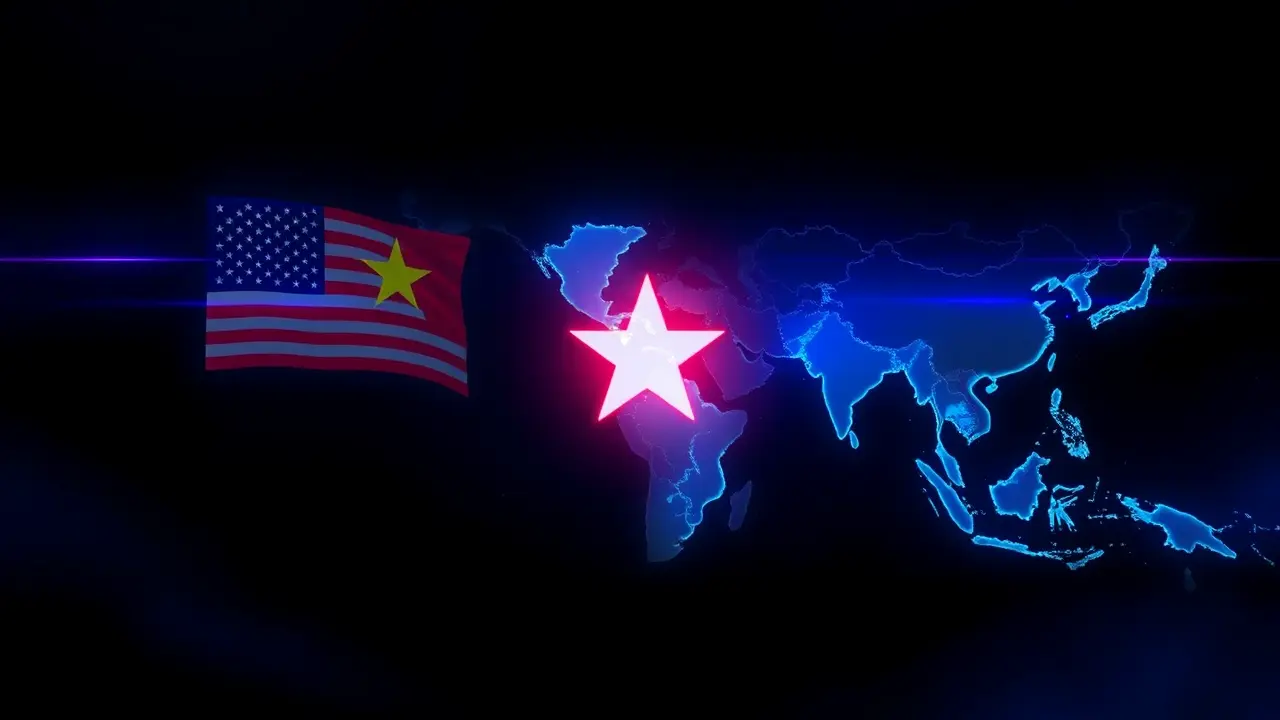
Politicsconflict & defenseArms Deals
US Defense Secretary Seeks Closer Military Ties with Vietnam.
RO
Robert Hayes
23 hours ago7 min read
In a move laden with historical significance, US Defense Secretary Pete Hegseth's arrival in Hanoi this Sunday marks a deliberate and calculated step toward forging deeper military ties with Vietnam, a nation once defined in the American strategic consciousness as a former foe. This diplomatic overture, occurring amidst prolonged and delicate negotiations concerning the potential supply of American military hardware, is not merely a transactional discussion but a profound realignment in the geopolitics of Southeast Asia.Secretary Hegseth’s agenda, which includes high-stakes meetings with Vietnam’s Communist Party chief To Lam, President Luong Cuong, and Defence Minister Phan Van Giang, underscores the seriousness with which Washington views this partnership. His assertion that 'deeper [military] cooperation will benefit both of our countries' is a diplomatic understatement masking a complex strategic calculus aimed squarely at countering China's expansive and assertive presence in the South China Sea.One cannot analyze this development without the sobering context of history; the specter of the Vietnam War, a conflict that cost millions of lives and shaped a generation of American foreign policy, now serves as the stark backdrop against which this new alliance is being sketched. The journey from the fall of Saigon in 1975 to the Comprehensive Partnership of 2013 and now to serious defense talks is a testament to how national interests can compel even the most unlikely of bedfellows to reassess their positions, a dynamic not unlike the post-World War II reconciliations that reshaped Europe.From an analytical perspective, this courtship is a direct component of the broader US Indo-Pacific strategy, which seeks to weave a network of capable and willing regional partners to ensure a balance of power. For Vietnam, a country fiercely protective of its sovereignty and historically wary of over-reliance on any single power, the embrace of American military cooperation represents a pragmatic, if cautious, hedging strategy against its northern neighbor's overwhelming influence.The potential consequences are multifaceted: enhanced US naval access, intelligence sharing, and the transfer of sophisticated surveillance and maritime patrol assets could significantly alter the operational landscape in disputed waters, potentially raising the stakes for Beijing and testing the limits of its 'peaceful rise' rhetoric. However, this path is fraught with challenges; Vietnam's one-party state and its 'Four No's' defense policy—no military alliances, no foreign bases, no partnering against another country, and no use of force in international relations—create inherent limitations on how far this cooperation can proceed without triggering internal political friction or external retaliation.Expert commentary from regional analysts suggests that Hanoi will likely proceed with characteristic gradualism, extracting technology and training to bolster its own self-reliance while carefully avoiding any formal alliance that could be construed as containment. The success of this endeavor will therefore depend not on grand declarations, but on the patient, persistent building of trust and interoperability, a slow and steady process that, if successful, could redraw the strategic map of Asia for decades to come, echoing the long-term realpolitik that has defined great power competition throughout history.
#featured
#US-Vietnam relations
#military cooperation
#arms deal
#Pentagon
#diplomacy
Stay Informed. Act Smarter.
Get weekly highlights, major headlines, and expert insights — then put your knowledge to work in our live prediction markets.
© 2025 Outpoll Service LTD. All rights reserved.